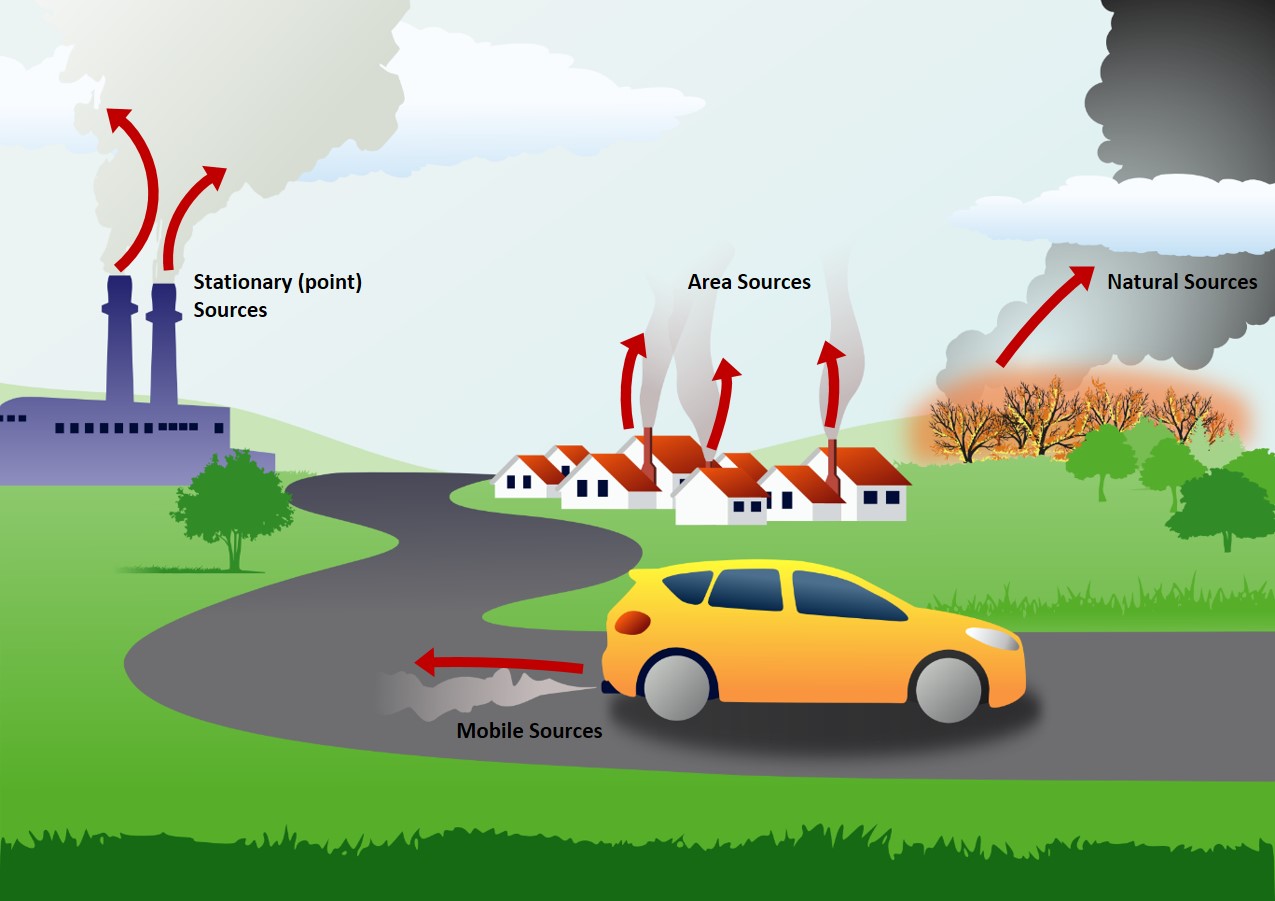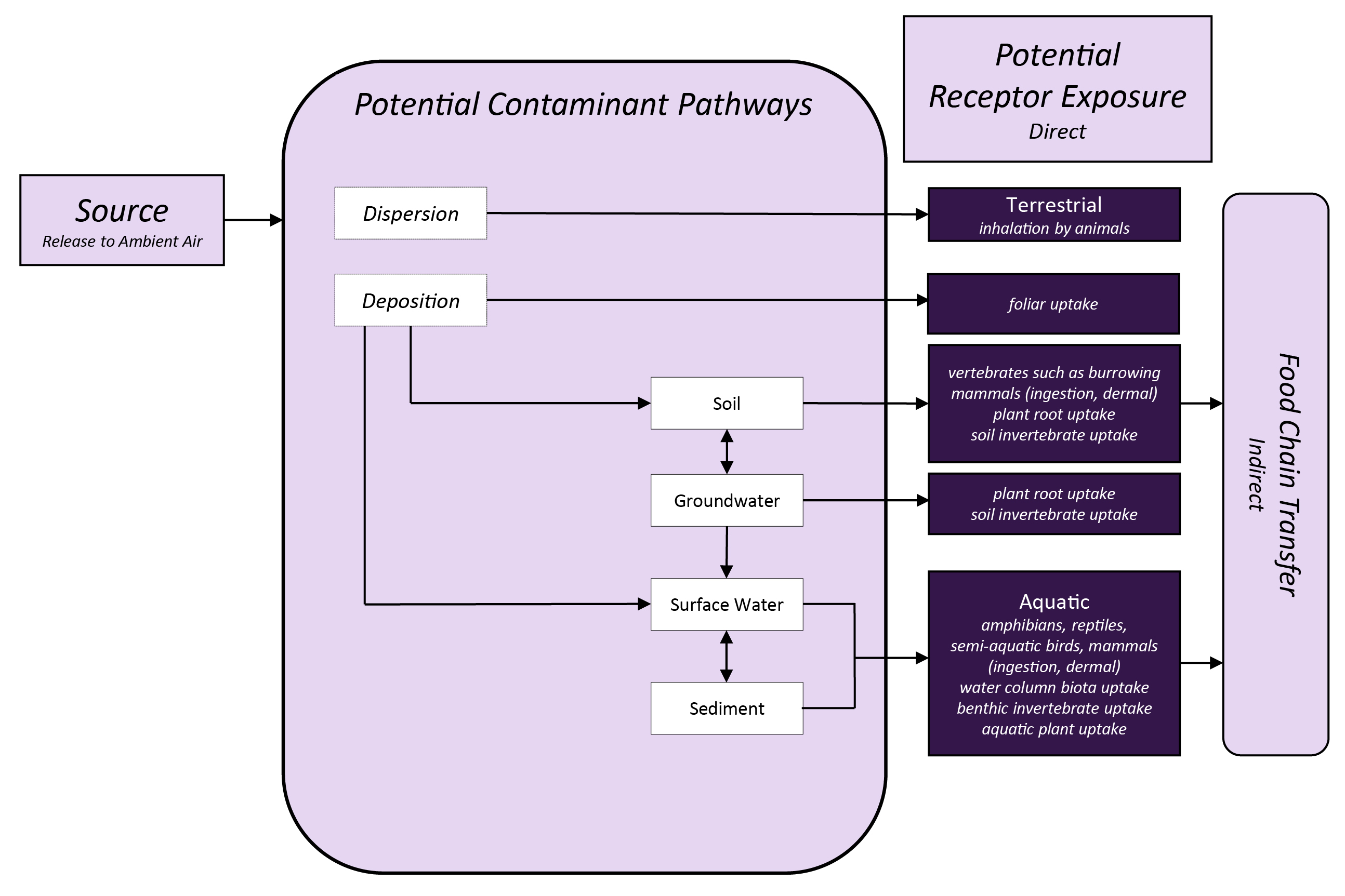EPA EcoBox Tools by Exposure Pathways - Air
Overview

The figure below depicts multiple sources of pollution to ambient air.

After contaminants are released to ambient air, their transportMovement within a medium or between media., dispersion, and transformationChange in a chemical or physical state. are governed by several factors including:
- Meteorological factors (e.g., wind, temperature, precipitation);
- Terrain characteristics (e.g., amount and type of vegetation, presence of water bodies);
- Wet and dry deposition rates;
- Particle mass and size; and
- Certain physicochemical properties of the air contaminant (e.g., vapor pressure, air-water partition coefficient [Henry's Law constant], octanol/air partition coefficient [Koa], and molecular diffusivity).
Physicochemical properties data will help determine whether a chemical is likely to remain in the air, partition to other media, or transform physically, chemically, or biologically after release.
Exposure to contaminants in air can occur from direct contact (e.g., inhalation) or indirect contact from transfer and subsequent contact with other media (e.g., deposition of stressors onto soil or water and subsequent uptake into terrestrial or aquatic biota). For example:
- Stressors in air could be deposited on soil, surface water, or plants that are consumed by grazing or foraging animals.
- Stressors deposited on soils could be taken up by plants, soil invertebrates and soil microbes, or consumed incidentally by small burrowing mammals and birds. Stressors in soil can also migrate to groundwater and be taken up by plants.
- Fish and other animal life that contact surface water could be exposed to stressors that deposit to water from air; stressors in water might also deposit to sediment where benthic organisms and aquatic plants would be exposed.
Indirect exposure occurs for animals that consume contaminated food. Contaminants that bioaccumulateBioaccumulation is the general term describing a process by which chemicals are taken up by a plant or animal either directly from exposure to a contaminated medium (soil, sediment, water) or by eating food containing the chemical. Related terms are bioconcentration which chemicals are absorbed by an animal or plant to levels higher than the surrounding environment; and biomagnification, in which chemical levels in plants or animals increase from transfer through the food web (e.g., predators have greater concentrations of a particular chemical than their prey). in fatty tissues or bind to muscle tissue in animals can be transferred up the food chainA food chain is formed as one organism eats another. A food web is a system of interlocking and interdependent food chains, in which each organism supplies energy to another life form..
The diagram below illustrates relationships between potential exposure pathways and potential ecological receptors after a source releases a stressor to ambient air.
Tools
Resources are provided below to assess exposure to ecological receptors that occurs via air.

